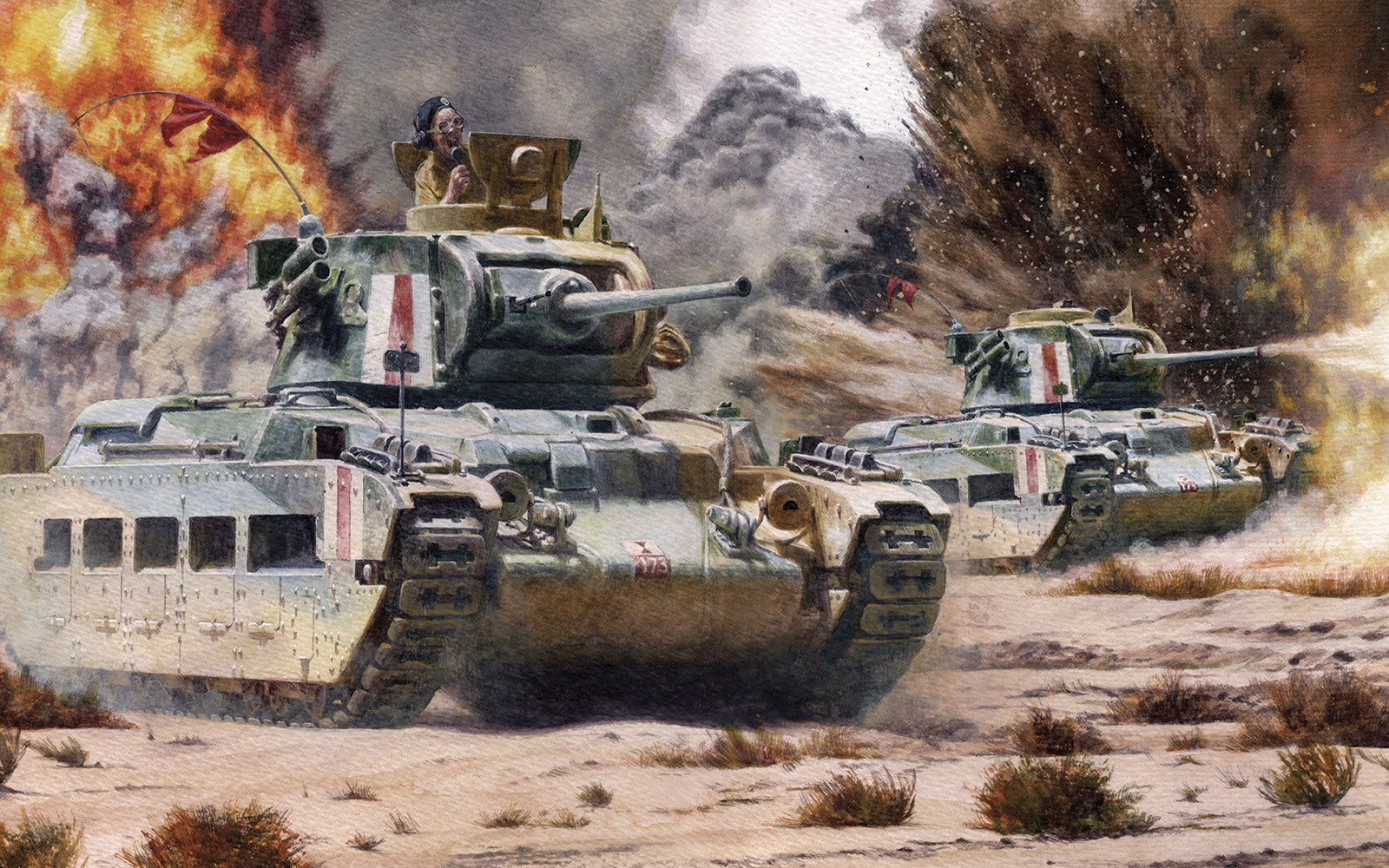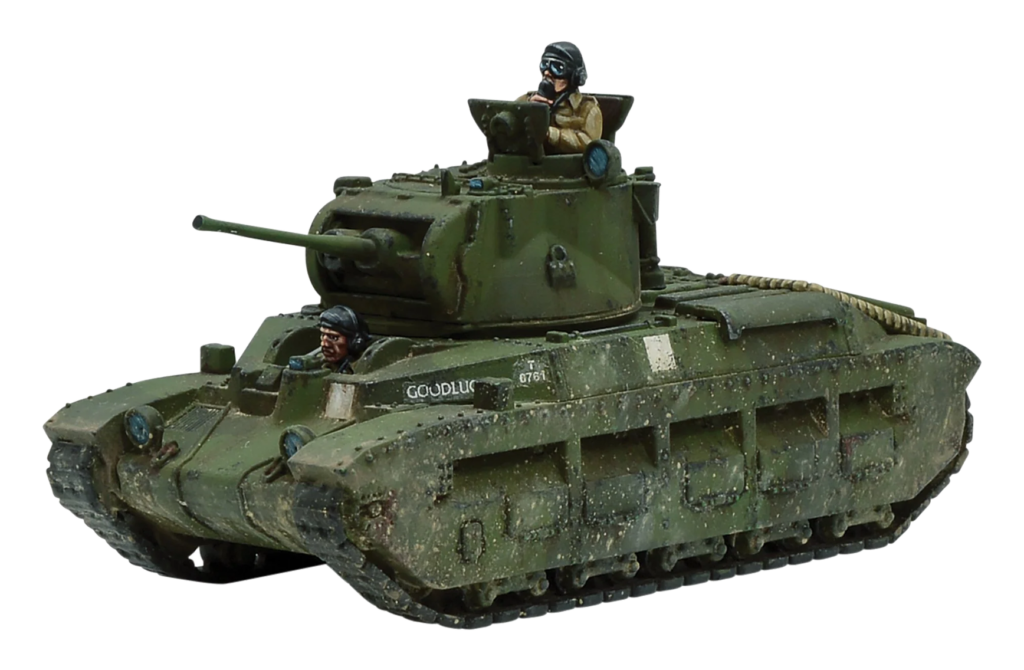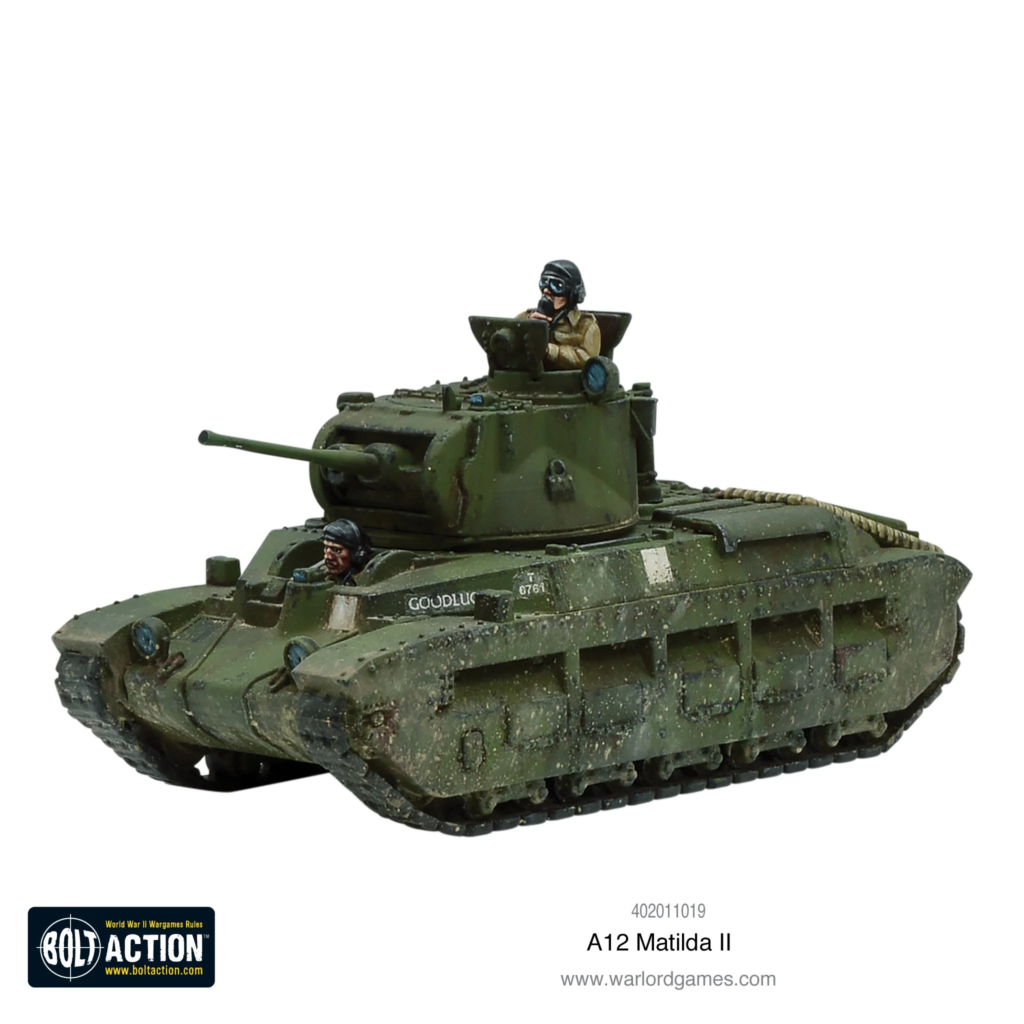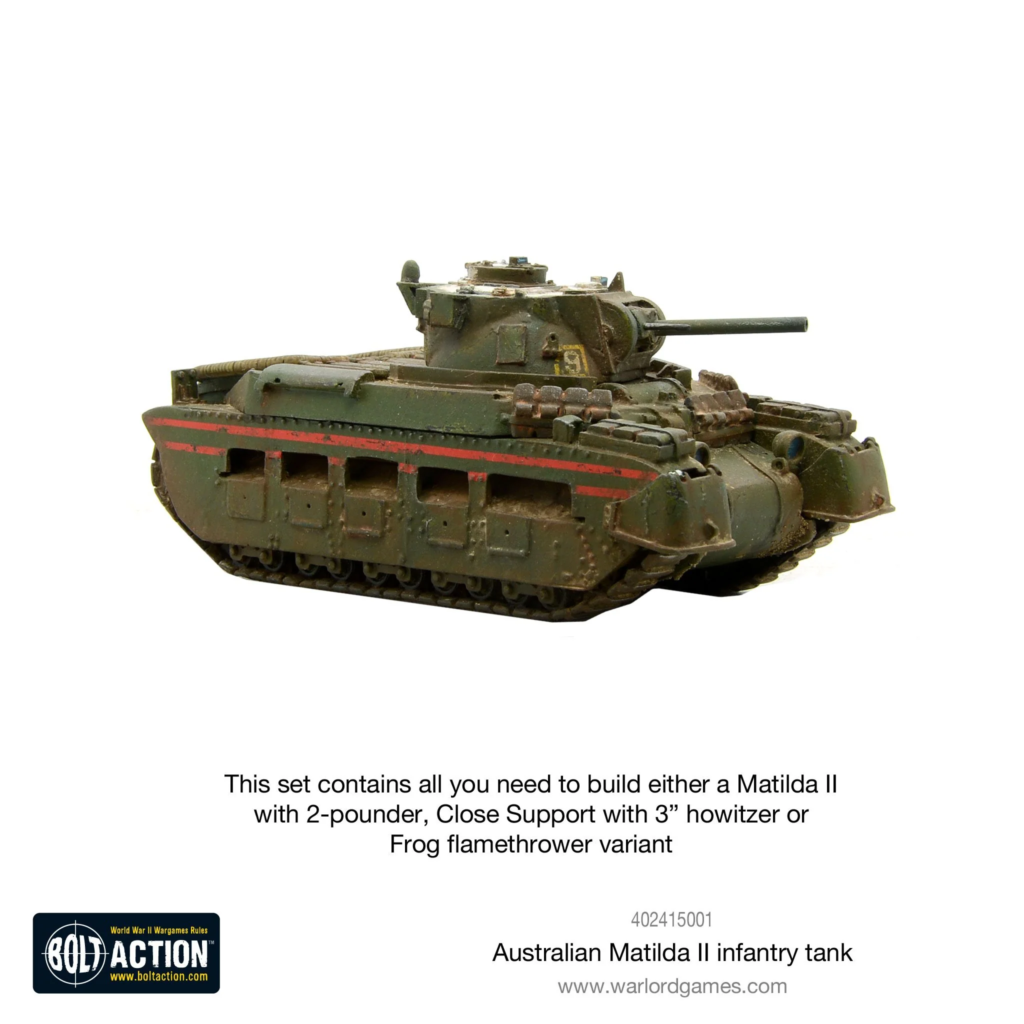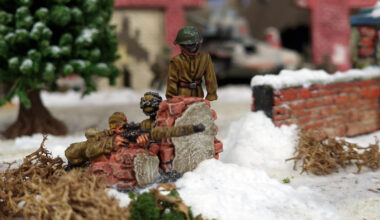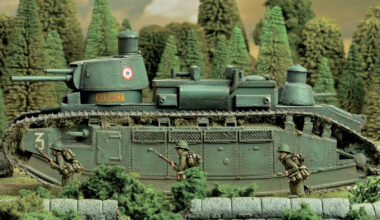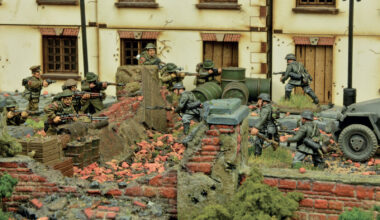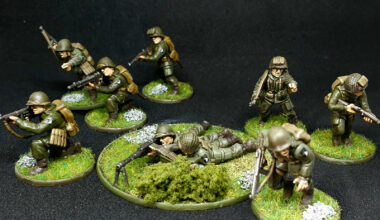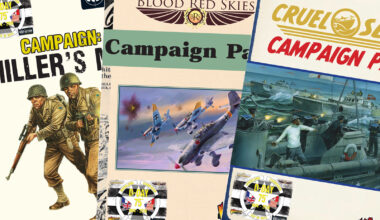In this edition of Forces of Fame, we’re kicking it old-school with some Bolt Action armour! This time we’re taking a look at the only British tank to remain in service from the beginning to the end of the Second World War – the A12 Infantry Tank Mk II Matilda II, more snappily known simply as the ‘Matilda II’ or just ‘Matilda’ (the Matilda I being a completely different design armed with only a machine gun and used only during the very opening stages of the war in Europe). Let’s waltz!
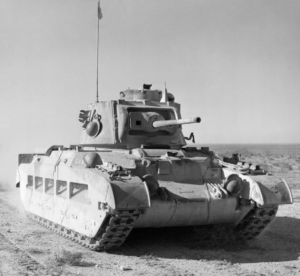
Stemming from a 1934 design concept for a cannon-armed ‘infantry tank’ (a uniquely British name for the concept of a slow, heavily armoured tank designed to advance in direct support of infantry forces and destroy enemy strongpoints), the Matilda II entered limited production in 1937. Only two were actually available when the Second World War broke out in September 1939, however, and production had to be rapidly stepped up to provide enough to equip units of the British Expeditionary Force with meaningful numbers, a process complicated by the complex and labour-intensive manufacturing required on the type.
When the Matilda II entered limited service during the Battle of France, it quickly proved to be an effective and capable fighting vehicle. While slow, its 2-pdr main gun was broadly comparable to other early-war weapons and posed a serious threat to the early German Panzers, and its thick armour was extremely effective against most of the common lighter anti-tank weapons in service with the Wehrmacht, although certainly not completely impervious. The legendary ‘Flak 88’ could deal with the Matilda at any range, as proved at the Battle of Arras, but overall the Matilda II could be considered one of the best Allied tanks of the early European war. Unfortunately, as with so much British equipment, the Matildas that survived the Fall of France were abandoned on the beaches of Dunkirk during the evacuation.
It was in the North African theatre that the Matilda II saw its most famous use. As in France, it proved effective against the earlier German (and particularly Italian) armour and anti-tank weaponry, with Italian forces almost totally unable to counter the thickly armoured vehicles. The vast distances involved in the desert war exposed the Matilda’s low speed and mechanical issues, while advances in technology quickly rendered both its armour more vulnerable and its 2-pdr main gun far less capable. In addition, the Matilda was both expensive and time-consuming to manufacture, which had led to the development of the cheaper Valentine, and the Matilda would be largely phased out of British service by 1943, with some survivors converted into ‘Scorpion’ mine-clearing vehicles (equipped with a frankly terrifying rotary flail!).
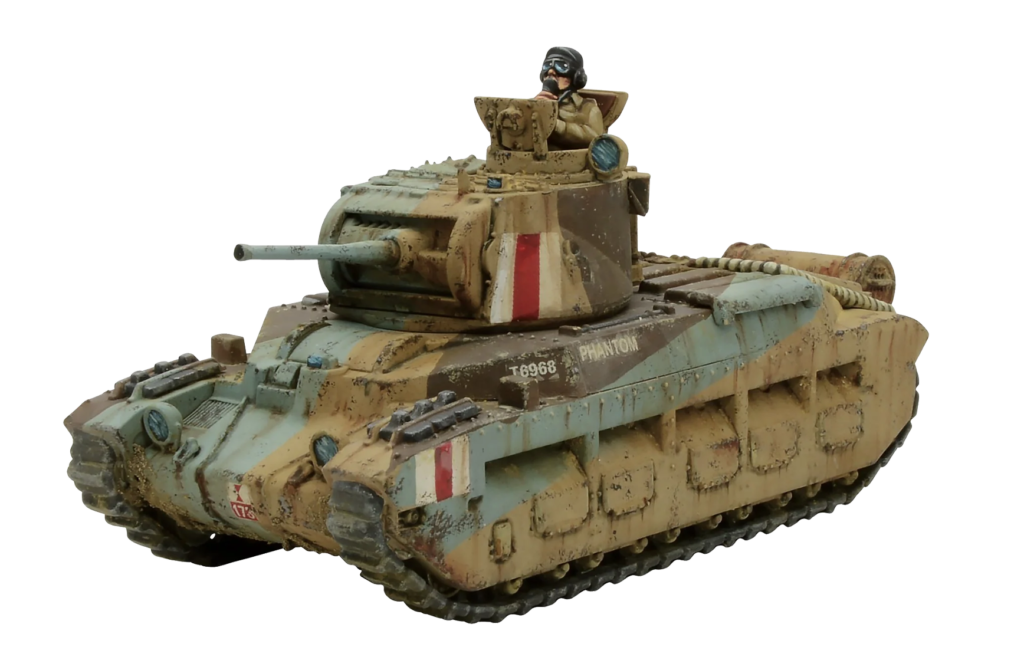
The Australian Army would make good use of the Matilda II in the Pacific, where they would see combat right until the end of the war. In the thick jungles and dense terrain, and particularly against lighter Japanese armour, the Matilda’s heavy armour was effective, and the ‘CS’ (Close Support) variant, armed with a 3” howitzer, would prove an excellent weapon for clearing out enemy strongpoints and emplacements. A flamethrower-equipped variant (named ‘Frog’) and experimental mortar-carrier (‘Hedgehog’) were also developed, with the former seeing some service late in the war. In colder climes, the Soviet Union also received almost a thousand Matildas, most of which would be destroyed or abandoned during 1942. Not particularly well-regarded by Soviet crews, and somewhat unsuitable to the harsh conditions and long road marches, they would be quickly phased out in favour of more capable designs such as the T-34. Some would be captured by Axis forces throughout the war, and, as was typical, pressed into limited service.
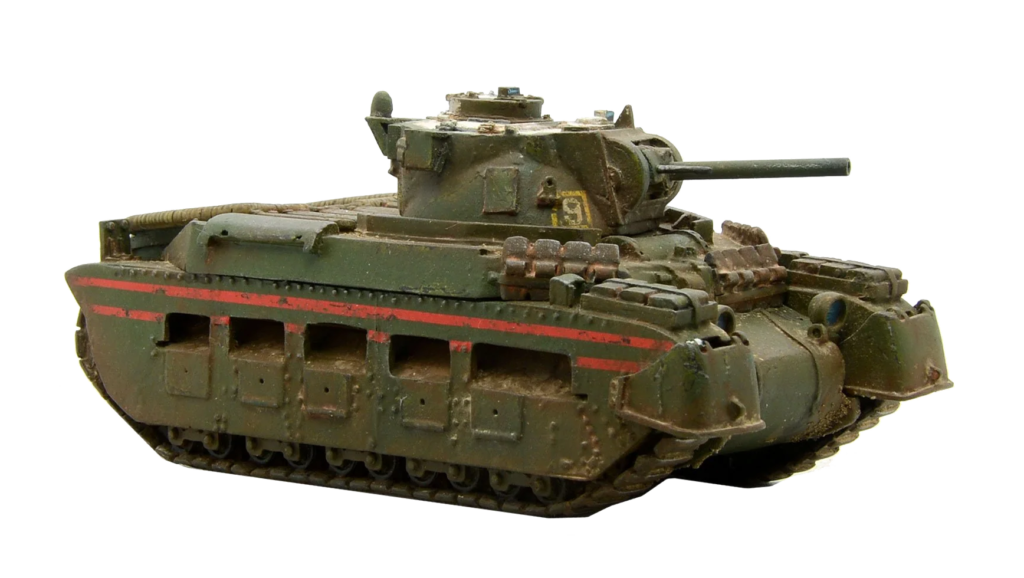
With that necessarily potted summary of the Matilda II’s service history, let’s take a look at how it performs in Bolt Action, and who can make use of it! It’s one of a very few tanks to serve throughout the war, meaning there’s really no reason not to have one (or two, or three!). There are essentially three variants for Bolt Action purposes – the ‘normal’ Matilda II, the IICS, and the Frog, all of which can be found in Armies of Great Britain. We’ll start with the baseline model – for 155 points at Regular, you get a turret-mounted light AT gun and co-axial MMG, mounted on a 9+ DV medium tank hull, with the Slow special rule. It’s not going to set the world on fire offensively (leave that to the flamethrower-equipped Frog!), but especially in early-war games it can provide a surprisingly stalwart opponent, particularly against opposition relying on light AT guns or anti-tank rifles as their primary method of dealing with armour. If your opponent has no reliable way of dealing with your tank, you can really mess with their strategy, and this can be a great way to swing games in your favour!
My personal favourite of the Matilda II variants has to be the IICS – for the same points as the standard model, you can swap the light AT gun out for a light howitzer, and I adore howitzers on tanks! A versatile, cost-effective weapon, they can menace enemy infantry and dish out extra pins to keep enemy vehicles on their toes, I much prefer them over the light AT gun for general-purpose work. Remember, HE means Pins, and, say it with me: Pins mean Wins!
For the antipodean pyromaniacs among us, we have the Frog, still at 155 points for Regular but with the turret mounting a fearsome flamethrower rather than a conventional gun. Capable of absolutely annihilating infantry and vehicles alike, it does suffer from the risk of explosion caused by, well, carrying a whacking great tank of fuel internally, but that’s where the 9+ DV comes in (hopefully)! While still Slow, remember that a vehicle-mounted flamethrower has a 12” range, which you can use to your advantage (particularly if your opponent forgets that little detail!). It’s unlikely to win you an entire game on its own, but if used well can certainly hold down a flank and kill far more than its 155 points – always a boon for Aussie armies!
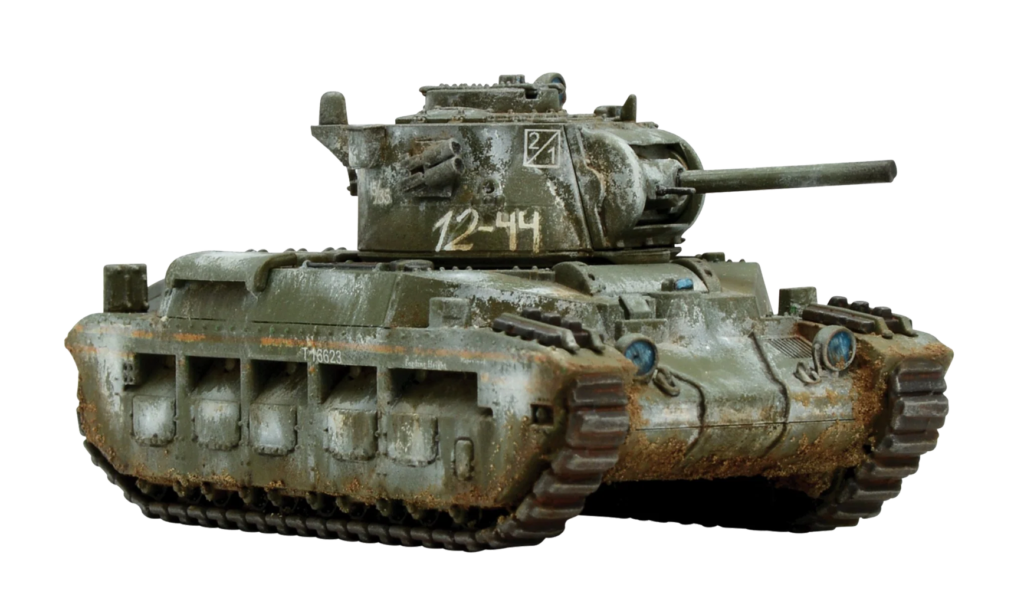
As they did historically, Soviet forces can also take Matilda IIs (but not the Frogs!) under Lend-Lease – perfect for any Soviet players looking for a slightly earlier force, or just something a bit different!
Need a tank? Why not Matilda?
Matilda II Troop
The Bolt Action Tank Troop (and the Axis Zug) boxed sets each contain three examples of an iconic WWII armoured vehicle in plastic, at a fantastic price against purchasing three separately. As many of our plastic tanks allow you to build one of several variants, this is an extremely cost-effective method of getting multiple variants onto your hobby workbench, or even multiples of a single variant for those big games or armoured platoon lists.
The Matilda II Tank Troop has the option for you to build Western Desert, BEF or Soviet versions of the infantry tank, armed either with a 2-pdr or a 3″ howitzer main armament.
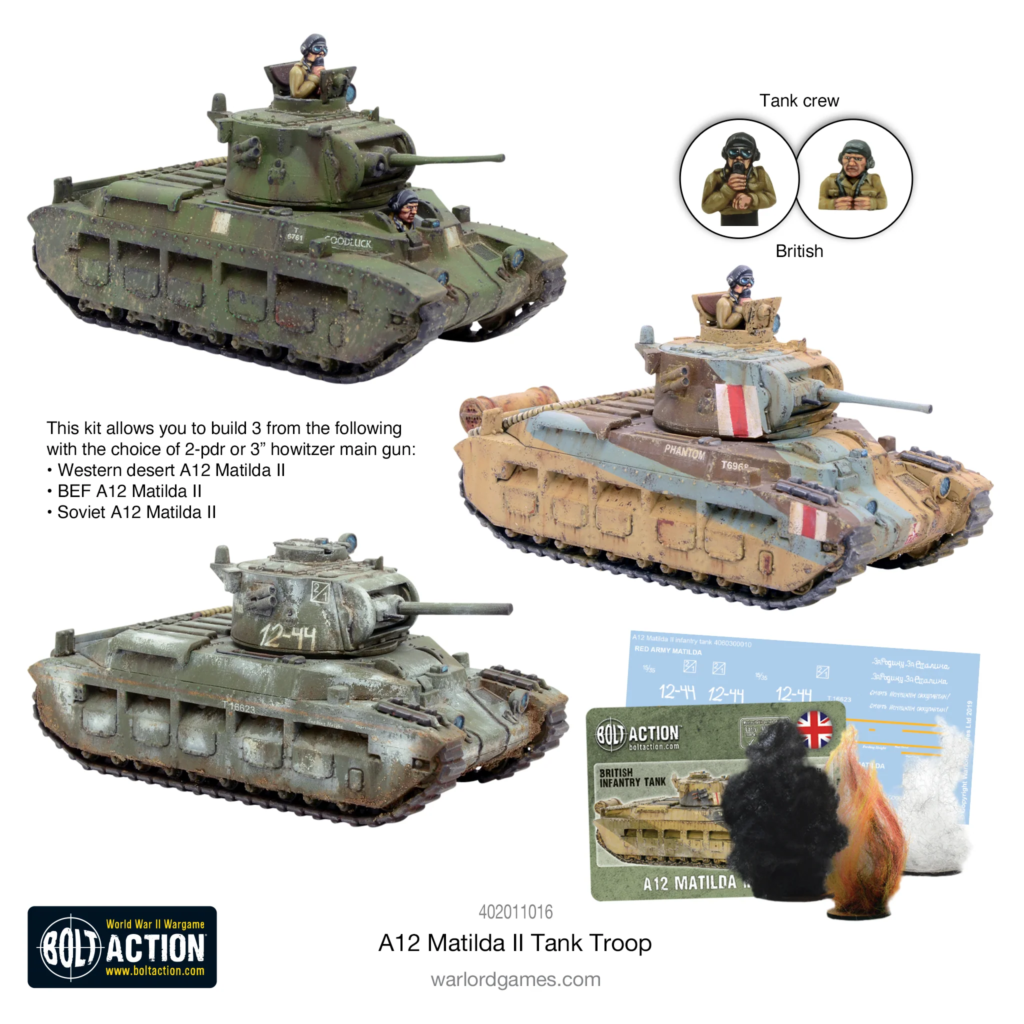
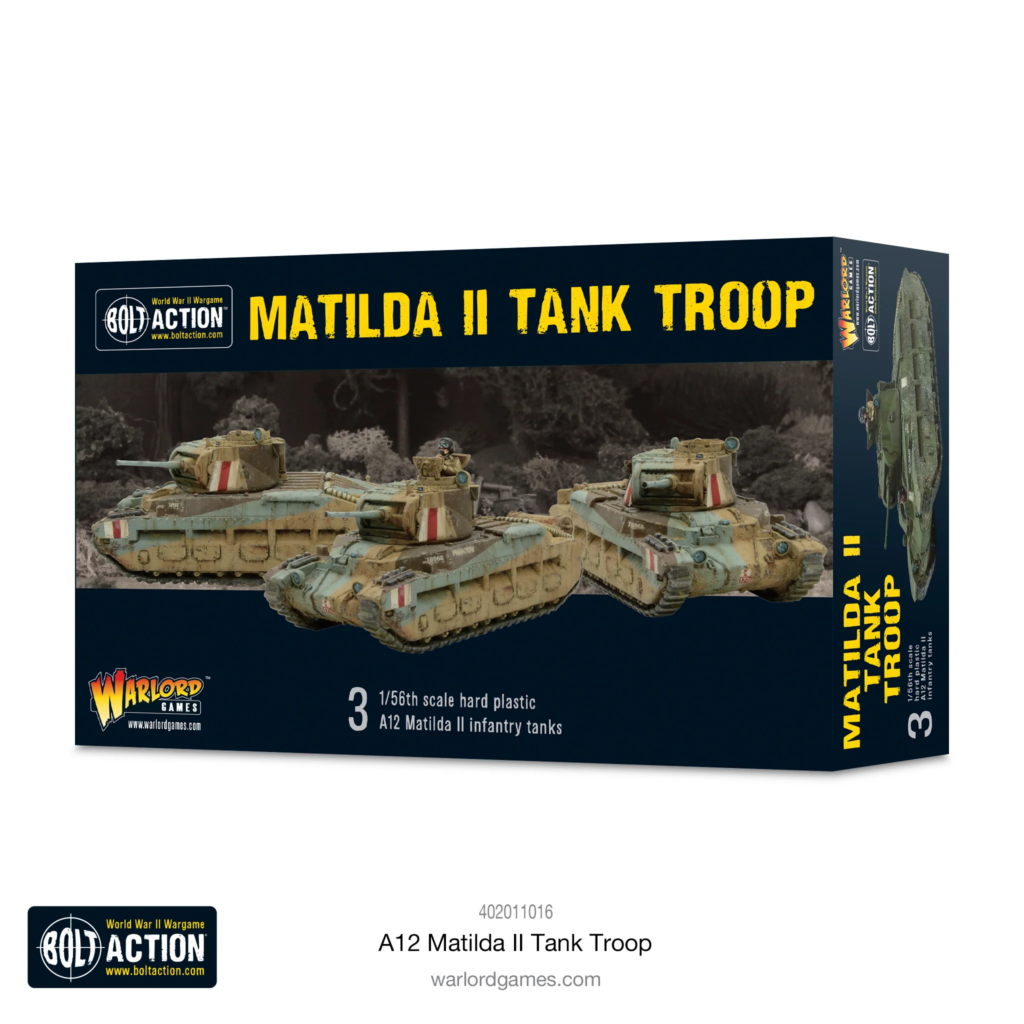
Other articles in the Forces of Fame Series:
Bolt Action – The Tiger I; Princess Elizabeth (Jubilee Special); Japanese Special Naval Landing Force; M18 Hellcat; Centurion Mk III; British Airborne; M4A3E8 Sherman ‘Easy Eight’; German Fallshirmjäger; FlaK 88; Panzer IV (Early War);
Blood Red Skies – Messerschmitt Bf 110; Ki-43 II ‘Oscar’; Grumman F9F Panther; Vought F4U Corsair;
Victory at Sea – The Bismarck; Fletcher-Class Destroyers; Kongō; Yamato-class Battleships;
Pike & Shotte (& Pike & Shotte Epic Battles) – Cuirassiers; Polish Winged Hussars; Dragoons;
Black Powder (& Black Powder Epic Battles) – The Iron Brigade; 95th Rifles; Zulus;
Black Seas – HMS Victory;
Hail Caesar / SPQR – Dacian Falxmen; Hoplites;
